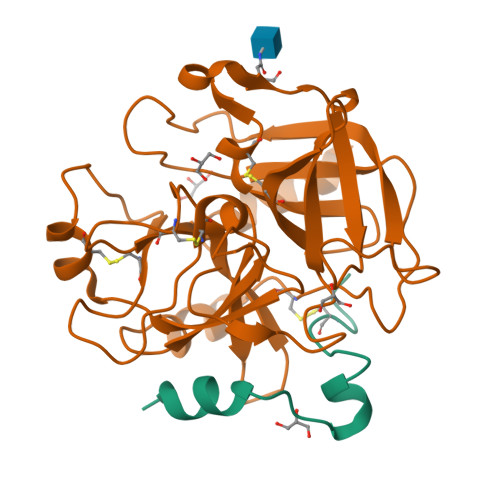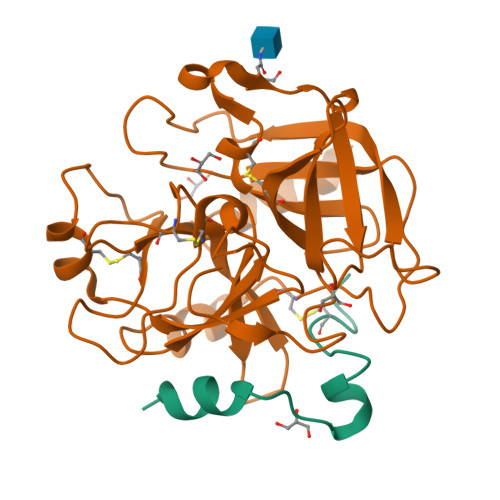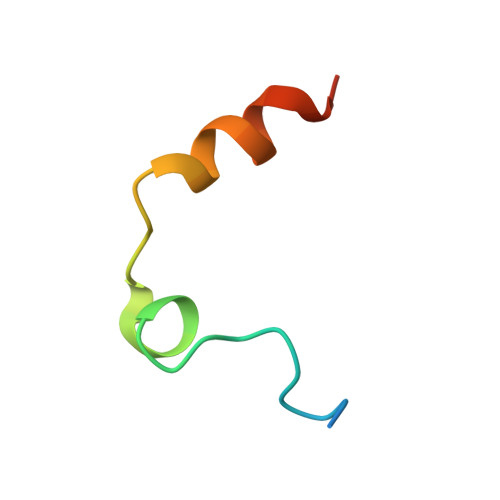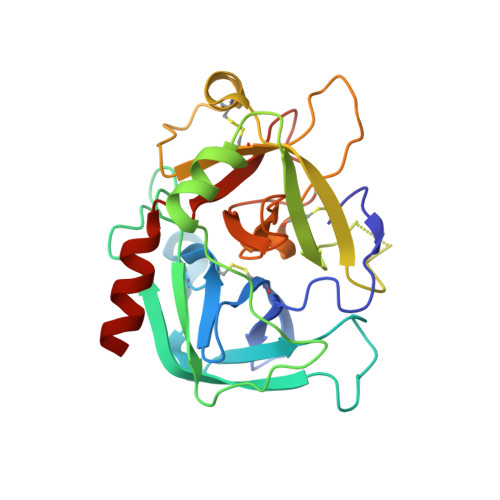Mutant N143P reveals how Na+ activates thrombin
Niu, W., Chen, Z., Bush-Pelc, L.A., Bah, A., Gandhi, P.S., Di Cera, E.(2009) J Biological Chem 284: 36175-36185
- PubMed: 19846563
- DOI: https://doi.org/10.1074/jbc.M109.069500
- Primary Citation of Related Structures:
3JZ1, 3JZ2 - PubMed Abstract:
The molecular mechanism of thrombin activation by Na(+) remains elusive. Its kinetic formulation requires extension of the classical Botts-Morales theory for the action of a modifier on an enzyme to correctly account for the contribution of the E*, E, and E:Na(+) forms. The extended scheme establishes that analysis of k(cat) unequivocally identifies allosteric transduction of Na(+) binding into enhanced catalytic activity. The thrombin mutant N143P features no Na(+)-dependent enhancement of k(cat) yet binds Na(+) with an affinity comparable to that of wild type. Crystal structures of the mutant in the presence and absence of Na(+) confirm that Pro(143) abrogates the important H-bond between the backbone N atom of residue 143 and the carbonyl O atom of Glu(192), which in turn controls the orientation of the Glu(192)-Gly(193) peptide bond and the correct architecture of the oxyanion hole. We conclude that Na(+) activates thrombin by securing the correct orientation of the Glu(192)-Gly(193) peptide bond, which is likely flipped in the absence of cation. Absolute conservation of the 143-192 H-bond in trypsin-like proteases and the importance of the oxyanion hole in protease function suggest that this mechanism of Na(+) activation is present in all Na(+)-activated trypsin-like proteases.
Organizational Affiliation:
Department of Biochemistry and Molecular Biophysics, Washington University School of Medicine, St. Louis, Missouri 63110.



















